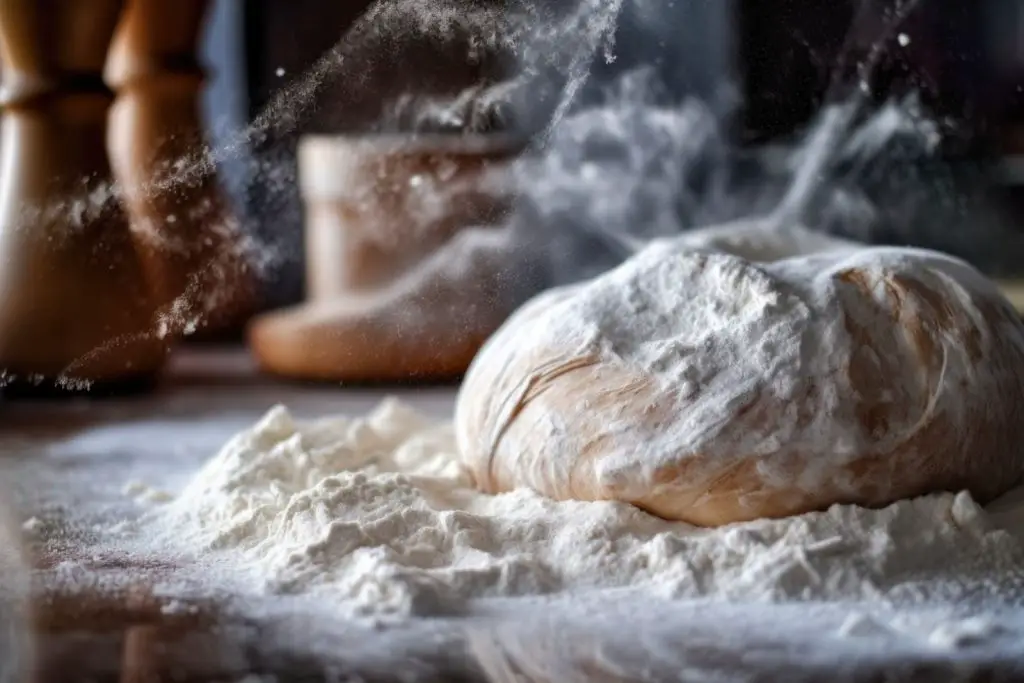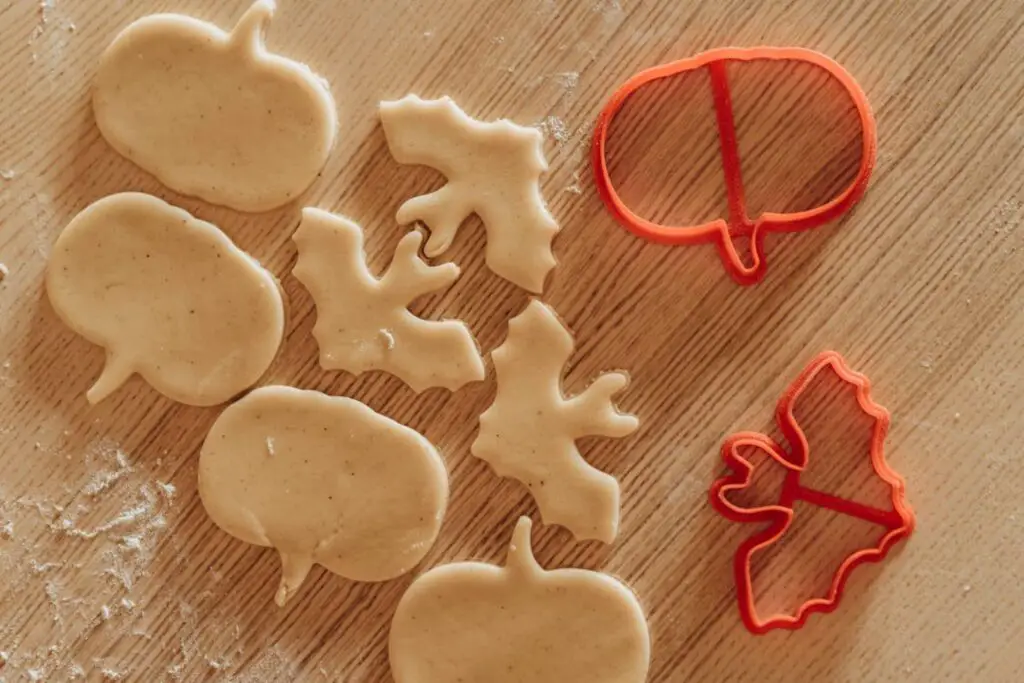
Jelly is a delicious treat enjoyed by many, whether it’s spread on toast or used as a topping for desserts. If you find yourself with a surplus of jelly or want to preserve your homemade batch for future enjoyment, freezing is a convenient option. Freezing jelly helps retain its flavor and texture, allowing you to savor its sweetness long after its peak season. By following a few simple steps, you can freeze jelly effectively and ensure its optimal quality. This article provides a comprehensive guide on how to freeze jelly and keep it deliciously fresh.
Here’s a step-by-step guide on freezing jelly:
Step 1: Choose your favorite jelly
When it comes to freezing jelly, the first step is to select the type of jelly you want to preserve. Whether you have homemade jelly or store-bought varieties, both can be successfully frozen. It’s important to choose a jelly that you truly enjoy and find flavorful.
If you have made your own jelly, ensure that it is fresh and has been properly stored. Homemade jelly that has been properly sealed and kept in the refrigerator is ideal for freezing. On the other hand, if you have store-bought jelly, check the expiration date to ensure its freshness.
Selecting a high-quality jelly is crucial because freezing can alter the texture and taste of low-quality or expired products. Opt for jellies that are made with real fruit and natural ingredients, as they tend to freeze better and maintain their flavor and texture.
Whether you prefer classic flavors like strawberry or grape, or you’re adventurous and enjoy unique combinations, the choice is yours. Consider your personal taste preferences and any dietary restrictions when selecting the jelly.
The key is to choose a jelly that you genuinely enjoy, as freezing it will allow you to savor its taste long after its usual shelf life. So go ahead and pick your favorite jelly flavor, ensuring that it is fresh, high-quality, and ready to be transformed into a frozen delight.
Step 2: Prepare your containers
Once you have chosen the jelly you want to freeze, the next step is to gather the appropriate containers for storage. It’s important to use airtight containers or freezer-safe jars to ensure the jelly stays fresh and maintains its quality throughout the freezing process.
Airtight containers or jars designed for freezing are essential because they create a barrier against moisture and air, which can lead to freezer burn and affect the taste and texture of the jelly. These containers prevent the jelly from absorbing any unwanted odors or flavors from the freezer as well.
Before using the containers, make sure they are clean and dry. Proper sanitation helps maintain the quality and safety of the jelly during storage. Wash the containers with warm, soapy water, and rinse them thoroughly to remove any residue or lingering odors. Allow them to dry completely before filling them with jelly.
Using containers specifically designed for freezing is crucial because they are made from materials that can withstand low temperatures without cracking or warping. These containers are typically made of durable plastic or glass that is resistant to extreme cold. They are also designed with tight-fitting lids or seals that provide an extra layer of protection against air and moisture.
Can I freeze jelly in plastic bags?
While it’s possible to freeze jelly in plastic bags, it’s generally not recommended. Plastic bags are more prone to tearing or leaking, leading to potential freezer burn and contamination. It’s best to use airtight containers or freezer-safe jars specifically designed for freezing to maintain the quality of the jelly.
Step 3: Portion the jelly and fill the containers
When freezing jelly, it’s important to portion it appropriately to ensure convenience and minimize wastage. If you have a large jar of jelly, it’s best to divide it into smaller portions before freezing. This allows for easier thawing when you only need a portion at a time and prevents the need to thaw and refreeze the entire jar, which can affect the quality of the jelly.
Consider the serving sizes you prefer or commonly use. This could be individual servings, smaller portions for spreading on toast, or specific amounts for recipes. By portioning the jelly according to your needs, you can easily thaw and use just the right amount without having to defrost more than necessary.
Carefully pour the jelly into the prepared containers, ensuring that they are clean and dry as mentioned earlier. Leave some headspace at the top of each container. This headspace is necessary because jelly expands slightly during freezing due to the water content. Providing room for expansion prevents the containers from cracking or breaking under the pressure.
The amount of headspace needed will depend on the type of container and the volume of jelly you’re freezing. As a general guideline, leave about ½ inch (1.3 cm) of space between the top of the jelly and the lid or closure of the container. This allows the jelly to expand without causing any damage.
Can I freeze jelly in individual portions?
Yes, freezing jelly in individual portions is a great way to have single servings readily available. Portion the jelly into smaller containers or use ice cube trays for convenient portion sizes. This allows you to thaw and enjoy only the amount you need, reducing waste and ensuring the freshness of the remaining jelly.
Step 4: Seal the containers
After filling the containers with jelly, the next step is to ensure they are tightly sealed. This is important to prevent air from entering the containers, which can lead to flavor loss and freezer burn.
Air exposure can cause the jelly to oxidize, resulting in changes in flavor, color, and texture. Additionally, the presence of air can promote the growth of bacteria and other microorganisms, potentially compromising the safety of the jelly.
If you are using containers with lids, such as jars, make sure to screw the lids on securely. Check that the lids are properly aligned with the container threads and tighten them firmly. This creates a tight seal that helps prevent air from entering.
For containers with other types of closures, such as snap-on lids or clips, ensure that they are securely fastened as per the manufacturer’s instructions. Pay attention to any additional features like rubber gaskets or seals that contribute to a more airtight seal.
It’s important to note that even small gaps or loose closures can allow air to enter, so take care to ensure a tight seal. This will help maintain the freshness, flavor, and quality of the jelly during freezing.
Step 5: Label and date the containers
Properly labeling and dating the containers of frozen jelly is an important step in organizing your freezer and ensuring you can easily identify and use the jelly in a timely manner.
Labeling each container with the flavor of the jelly allows you to quickly identify the type of jelly without having to open the container. This is especially helpful if you have frozen multiple flavors of jelly or if you’re storing different batches with varying ingredients or additives.
In addition to the flavor, it’s also beneficial to include the date of freezing on the label. This allows you to keep track of the storage time and prioritize the consumption of older jelly first. While frozen jelly can generally be stored for several months, it’s best to use it within a reasonable timeframe to maintain its quality.
By dating the containers, you can ensure that you use the jelly before it exceeds its optimal storage duration. This helps you avoid potential issues with taste, texture, or safety that may arise from keeping the jelly in the freezer for an extended period.
To label the containers, you can use adhesive labels, masking tape, or freezer-safe markers. Write the flavor and date clearly on each label and attach it to the container or write directly on the container’s surface if it is safe to do so.
Step 6: Freeze the jelly
After properly sealing and labeling the containers of jelly, it’s time to place them in the freezer for freezing. This step is crucial for preserving the freshness and quality of the jelly over an extended period.
When placing the sealed containers in the freezer, it’s important to arrange them in a way that allows for efficient use of space. By maximizing the available space, you can make room for other items in the freezer while ensuring the containers are adequately frozen.
Keeping the containers in a single layer initially is advisable. This allows for faster freezing because the cold air can circulate more freely around each container. Rapid freezing helps preserve the texture and flavor of the jelly by preventing large ice crystals from forming, which can affect its quality.
If your freezer has multiple shelves or compartments, place the containers on a single shelf or in a specific section initially. Once the jelly is fully frozen, you can rearrange the containers to maximize space within the freezer.
It’s worth noting that it’s important to maintain a consistent temperature in the freezer. Avoid placing the containers near the freezer door or in areas where temperature fluctuations are more likely to occur. This helps ensure a stable freezing environment for the jelly.
How long can frozen jelly be stored in the freezer?
Frozen jelly can be stored in the freezer for about 9 to 12 months. However, it’s best to consume it within a reasonable timeframe to ensure the best flavor and quality. Proper storage conditions, such as using airtight containers and maintaining a consistent freezing temperature, are essential for maintaining the jelly’s integrity during storage.
Step 7: Thaw and enjoy
When the time comes to enjoy your frozen jelly, it’s important to thaw it properly to preserve its texture and taste. Follow these steps to thaw the jelly effectively:
- Remove a container from the freezer: Take out the desired container of frozen jelly from the freezer. Ensure that the container is securely sealed to prevent any water or condensation from entering during the thawing process.
- Transfer to the refrigerator: Place the container in the refrigerator. Thawing the jelly in the refrigerator allows for a slow and controlled thawing process, which helps maintain its texture and flavor. Avoid thawing at room temperature, as this can lead to uneven thawing and potential bacterial growth.
- Allow slow thawing: Allow the jelly to thaw slowly in the refrigerator overnight or for a few hours, depending on the size and thickness of the jelly. Thawing time may vary, but the slow process ensures that the jelly retains its original consistency.
- Check for desired consistency: Once thawed, check the jelly’s consistency. It should return to its original state, with a smooth texture and the ability to spread easily. If there are any noticeable changes in texture or separation, gently stir the jelly to blend it back together.
- Consume within a few days: Thawed jelly should be consumed within a few days. It is not recommended to refreeze previously frozen jelly, as the quality may deteriorate further upon refreezing. It’s best to thaw and use only the amount of jelly you intend to consume within a few days to ensure optimal taste and quality.
How do I thaw frozen jelly quickly?
To thaw frozen jelly quickly, you can place the sealed container in a bowl of cold water. Change the water every 30 minutes to maintain a consistent thawing temperature. Avoid using warm or hot water, as it can lead to uneven thawing or compromise the quality of the jelly.
Other related questions
Can I refreeze jelly?
It is not recommended to refreeze jelly once it has been thawed. The process of thawing and refreezing can affect the texture and quality of the jelly, potentially leading to a loss of flavor and a change in consistency. It is best to thaw and use only the amount of jelly needed to minimize the risk of compromising its taste and texture.
How do I know if the jelly has gone bad after being frozen?
To determine if frozen jelly has gone bad, inspect its appearance, smell, and taste. If the jelly shows signs of mold, an off-putting odor, or an unusual color, it may indicate spoilage. Additionally, if the taste is significantly altered or unpleasant, it is best to discard the jelly as it may have deteriorated during freezing or storage.
Can I freeze jelly that contains gelatin?
Yes, you can freeze jelly that contains gelatin. Gelatin-based jellies freeze well and maintain their texture when thawed properly. Just ensure that the jelly is stored in airtight containers and follow the recommended freezing and thawing instructions.
Can I freeze homemade jelly with fresh fruit?
Yes, you can freeze homemade jelly that contains fresh fruit. However, keep in mind that freezing may slightly change the texture of the fruit in the jelly. For the best results, ensure that the fruit is fresh and ripe when making the jelly and follow the proper freezing and thawing procedures.
Can I use frozen jelly for baking or cooking?
Yes, frozen jelly can be used for baking or cooking purposes. Thawed jelly can be incorporated into various recipes, such as fillings for pastries or toppings for desserts. However, it’s important to note that the texture of the jelly may change slightly after freezing, so adjust your recipe accordingly.
Should I freeze jelly before or after it’s opened?
You can freeze jelly both before and after it’s opened. Freezing unopened jars preserves freshness, while freezing leftover opened jars prevents waste. Just make sure to transfer the jelly to a suitable freezer-safe container if needed and follow proper sealing and labeling procedures.
Can I freeze jelly made with artificial sweeteners?
Yes, you can freeze jelly made with artificial sweeteners. Just ensure that the sweetener used is suitable for freezing, as some may lose their sweetness or change in taste when exposed to low temperatures. Follow the same freezing and thawing procedures as you would for regular jelly to maintain its quality.
Can I freeze jelly that has been opened and left at room temperature?
It is not advisable to freeze jelly that has been opened and left at room temperature for an extended period. Leaving the jelly at room temperature allows for potential bacterial growth, which can affect its safety and quality. It’s best to discard any opened jelly that has been left unrefrigerated for too long to avoid any health risks.








